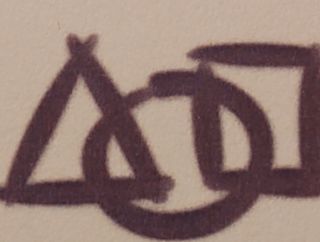Relationships
The "Win-Win Volley" in Relationships
Personal Perspective: An exercise to improve communication and connection.
Posted September 11, 2023 Reviewed by Kaja Perina
“It takes two to know one, what is the pattern that connects the crab to the lobster and the primrose to the orchid, and all of them to me to you?”
Gregory Bateson
I have found from working for the past forty years as a family therapist a simple but profound prerequisite to having a rewarding relational experience, one that is beyond what we are accustomed to and seldom recognize in our everyday interactions.
Imagine your daily encounters occurring within win-win volleys like being on a ping pong table. If you spike the ball, you and whoever you are communicating with both lose. This can be construed as lacking synchrony. However, a win-win communication is based on harmony, improvisation, empathy and mutuality when sharing a common context. This framework opens the door to a multitude of possibilities that bring relationships to a new level. It is an assertive means to “softening” one's being. The consequence of such a shift is that you can savor the “creative energy” of mutual learning as a work of art and what it means to be interdependent.

So how might this enhance relationships? I can attest that families articulating why they seek therapy mostly describe presenting problems as interpersonal conflicts, which surprisingly to them can be the forum for creativity.
First, let's consider the problem. When we engage in and sustain adversarial dynamics there is a tendency to perpetuate polarization on steroids. Gregory Bateson described it as "schismogenesis" meaning creating a division. It can take a “complementary” form or behavioral pattern such as the arms race or a couple accusing each other of who is to blame for their unhappiness, resulting in escalating outcomes as each side attempts to improve their advantage. It can also occur when one person or group puts another in a "symmetrical" submissive pattern such as bullying and being demeaning. Either way it produces injurious consequences.
Here is a case in point that includes a pattern that I have encountered thousands of times: Henry and Jane came to couples therapy due to what they described as negative consequences from a struggle to communicate with each other. This occurred with their attempts at decision making, parenting two young children and lack of equity with household chores. Within moments they started bantering by blaming each other in ways that seemed to have a long-term habitual frequency. It became very heated with each saying “But you do this too…”
After observing this revealing enactment, I had them settle down to do their genogram (a three generational psychological family tree. Each listened intently as their family of origin stories indicated many strengths and positive resources that could be used, but also a learned legacy of unhealthy communication patterns. Although they have been together for over fifteen years, they both expressed several times when describing their upbringing that “I never knew that about you...”
After explaining and encouraging them to try a win-win volley format, they began taking turns expressing their concerns and desire to make things better. Each agreed to intently listen and to paraphrase what they heard as well as checking to find out if they were on the same wavelength.
I also had them occasionally pause and use a “zooming in and out” exercise by imagining that they each had a camera taking a photo that described their present situation. I then asked them to widen that camera lens, taking time to use all their senses to form a new perspective before returning to their original photos and discussing how they can mutually create differences in their relationship. In most cases those experiencing this exercise describe a feeling of synchrony and will continue using this win-win volley especially when conflict seems unresolvable.
.jpg?itok=zxwxH1ll)
What I continue to learn from this framework is that when communication is recognized as being in-between individuals, there is a better opportunity to understand how relationships are interdependent.
My mentor, anthropologist Paul Byers described this synchrony as “good vibrations" or “state sharing.” When this joining begins, even with different temperaments and/or energy, a “biological phase locking” occurs in and out of awareness. This produces a powerful opportunity. It demonstrates how it takes two to know one. Nora Bateson, president of the International Bateson Institute describes this as “Symmathesy,” which generates "learning contexts through the process of interaction between multiple variables in a living entity, which supports mutual learning."
In the words of Carl Jung, “The meeting of two personalities is like the contact of two chemical substances, both are transformed." This lies between us and can be sustained by what emerges side by side and at the edges of win-win volleys that acknowledge our interdependence. This is the synergy of connecting with nature itself. However old habits die hard and we need support and encouragement to freely collaborate to mutually learn from each other.
Here are some prompts that may help you on the journey to improve relationships:
- How would you best describe your communications style?
- What unique qualities do you possess regarding communication?
- Think of ways you can create contexts to be collaborative with others.
- In what ways can you adjust and maintain improvement in your relationships?
- What barriers would you encounter and how can you avoid them to improve your relationships?
- Imagine you are volleying with one another in a very important moment of communication. What would you need to do to keep the conversation going in a way that creates a win-win moment?


